When I propagated lemongrass (purchased from the grocery store) for my garden, I started with only three stalks and planted them in the ground once the roots reached a few inches.
They were given ample sun, weekly watering in the summer, no (or hardly any) watering in the winter, and quickly grew into something that kinda resembled Cousin It.
That original bundle of three little stalks looks like this now.

And embarrassingly, this is what it looks like most of the year as I’m kind of a lazy gardener. The shrub-like herb has multiplied into a clump of at least 50 stalks, with the whole plant spanning 4 feet wide by 4 feet high.
I don’t often trim it or divide it, but since it’s spring and lemongrass doesn’t really get going again until summer, it was high time to give it a much-needed haircut.
Here’s how you can tell your plant is dormant, plus my simple technique for pruning lemongrass and keeping it healthy all year long.
When does lemongrass go dormant?
Lemongrass (Cymbopogon citratus) enters dormancy when temperatures start to dip below 45°F.
In USDA Hardiness Zones 10 and above, lemongrass slows down in winter and doesn’t put out as many new leaves each week. The plant is still green, but its leaves will look a bit bedraggled after a long growing season.
In zones 8b and 9, you’ll think the plant has died as the leaves turn brown in winter. But not to worry!
Lemongrass roots are typically hardy in zones 8b and 9. With a frost blanket or heavy layer of straw mulch over the soil, lemongrass (a tender perennial herb) has a good chance of returning year after year (even when the leaves die back).
Colder zones need to overwinter lemongrass indoors before the first frost hits. It’s happiest in a dimly lit room that’s kept at 50°F to 60°F (like a basement or garage), where it stays dormant through the cold, dark days of winter.
Special note for overwintering lemongrass: Cut the leaves off to keep the plant tidy and manageable, and water sparingly so it stays alive through the winter months. (It won’t grow during this time, but will happily hang out until it’s ready to kick into action again in spring.)

When should you prune lemongrass?
The best time to cut back your lemongrass is while it’s dormant, but not until temperatures start to warm up in spring. This can be anywhere from late February to late April, depending on your climate.
Nighttime temperatures should stay consistently in the mid-40°Fs for lemongrass to successfully bounce back from an early-season trim.
How to cut back lemongrass in cold climates
If you’re in zones 8b to 9, your job is easy: simply pull back the frost blanket (or mulch) and cut down the entire plant to just a couple inches above the tender white part of the stalk, removing all the brown leaves.
(Do this for overwintered lemongrass too. You can start to harden off the plant outside once it’s been pruned.)
It feels a bit shocking, I know, but as summer creeps closer, your lemongrass will grow back quickly.
How to cut back lemongrass in mild climates
Gardeners whose plants stay green all winter just need to maintain the shape of the shrub. Light pruning of the leaf tips can be done throughout the year, but a heavy pruning should be done in spring to give your lemongrass a chance to grow stronger and healthier.
To begin, rake out all the dead leaves under the plant. (If this is your first time pruning, you might be surprised by how much organic matter accumulates under there.)
Then put on some gloves (those leaf edges are paper-cut sharp!) and pull out any brown outer stalks as well as brown or rusted leaves.
You may have to reach in between the clump to get all the leaves out (but leave the inner stalks intact, as those are the newer ones). Generally, I give a light tug and anything dead comes out easily.
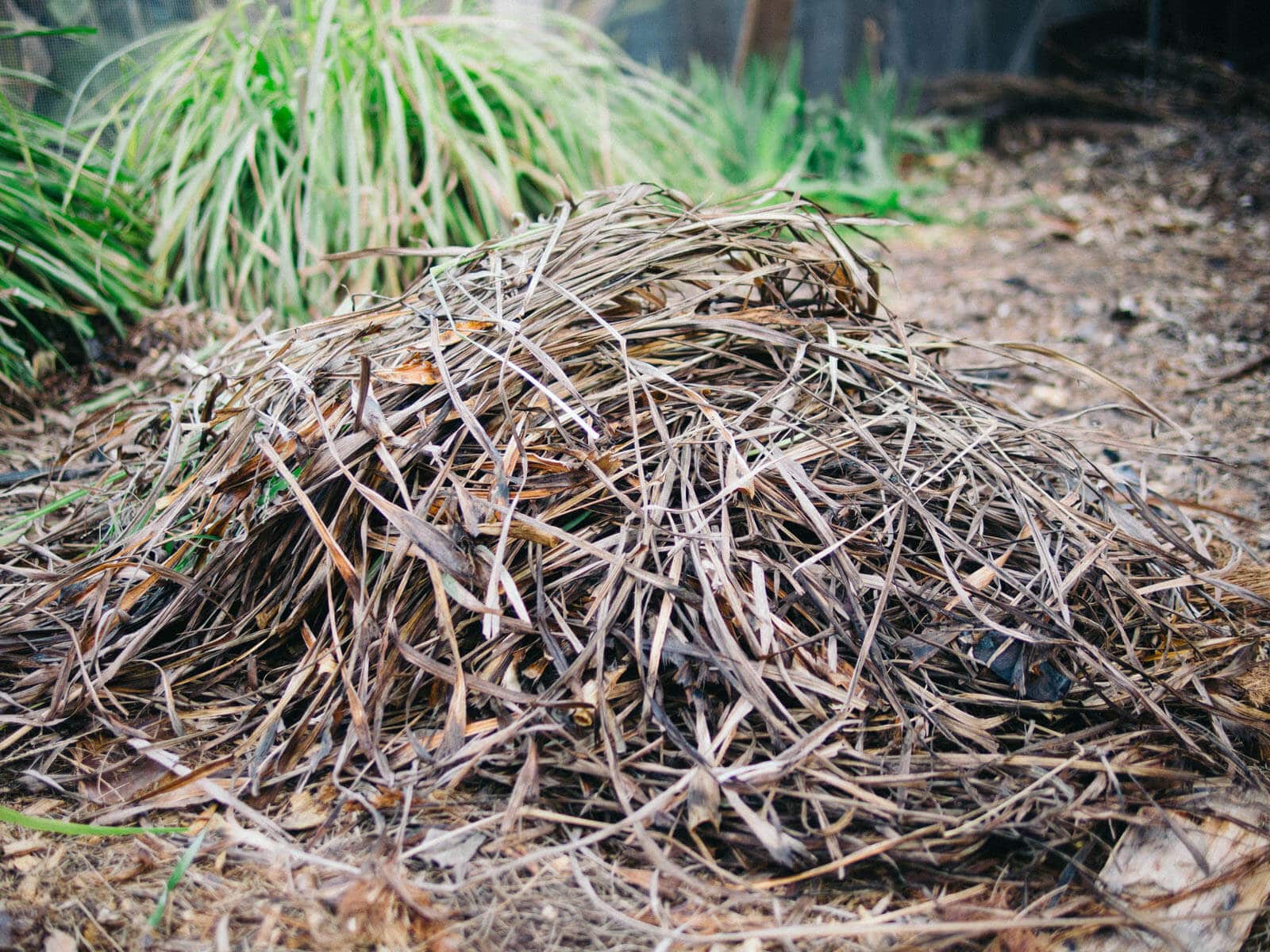
Once you’ve removed all the brown bits, use hedge shears to cut back the leaves. I just do a straight cut across, trimming one section of leaves at a time (similar to trimming bangs, if you’re into home haircuts).
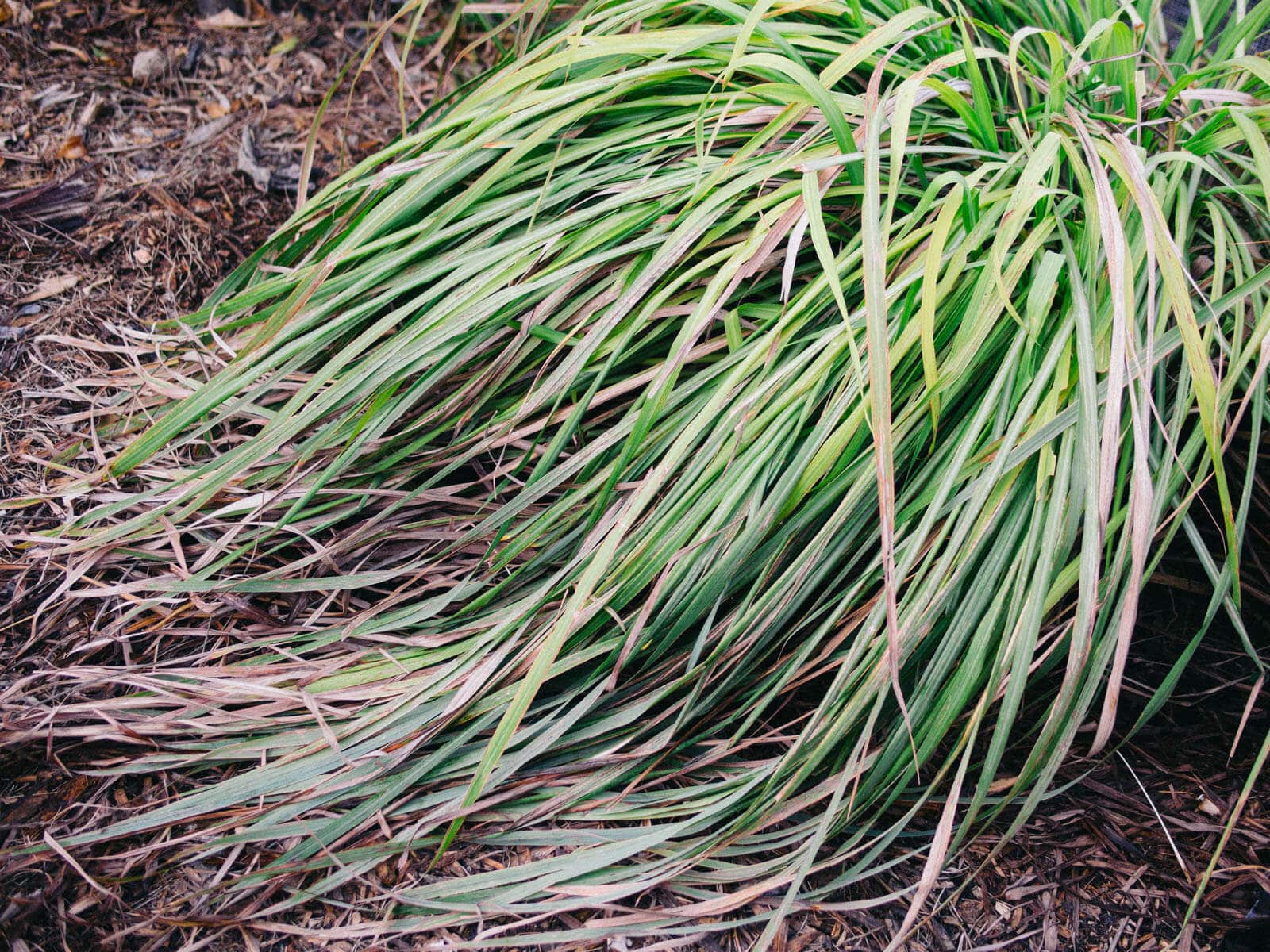
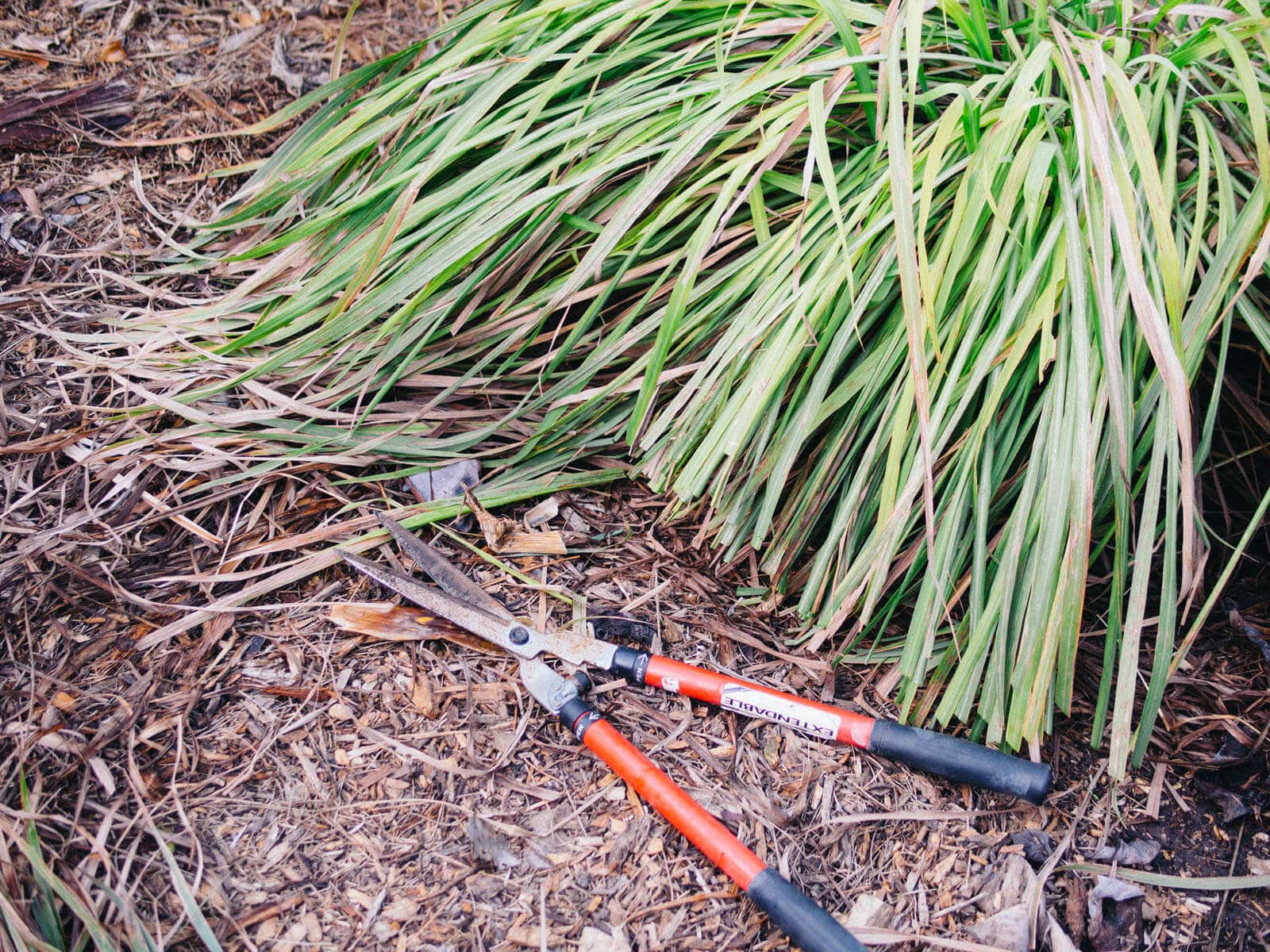
Trim as much as you want, as lemongrass can take a pretty good pruning. I like to trim my plant into a Tina Turner-esque mound of grass, keeping it short and neat.
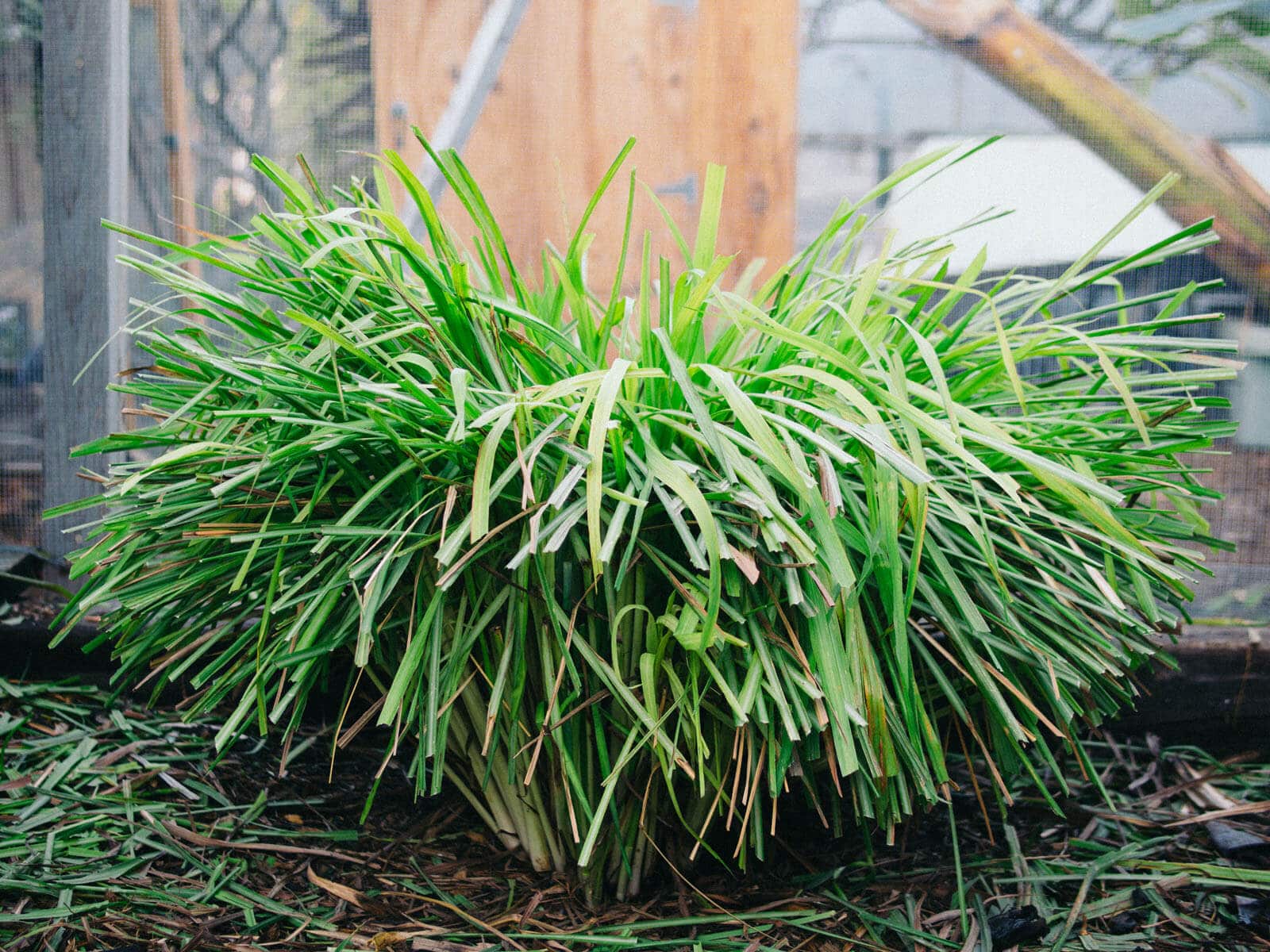
Once you’ve got the shape you want, you can finesse the cut and go all Edwards Scissorhands on it, trimming random brown tips here and there until your OCD wears off.
When finished, you should have a shapely green clump with healthy white stalks.

The arrival of summer will spur your lemongrass to grow vigorously again, and new leaves will fill out the plant more.
Did you know?
Lemongrass (Cymbopogon sp.) is sometimes called the citronella plant, as that’s where citronella oil (a natural mosquito repellent) comes from. But confusingly, it’s not the only citronella plant: the so-called “mosquito plant” (Pelargonium ‘Citrosum’) also goes by that common name.
How to tell them apart? Simple: Cymbopogon is a tall perennial grass, while Pelargonium ‘Citrosum’ is a member of the geranium family (and recognizable by its leaf shape).
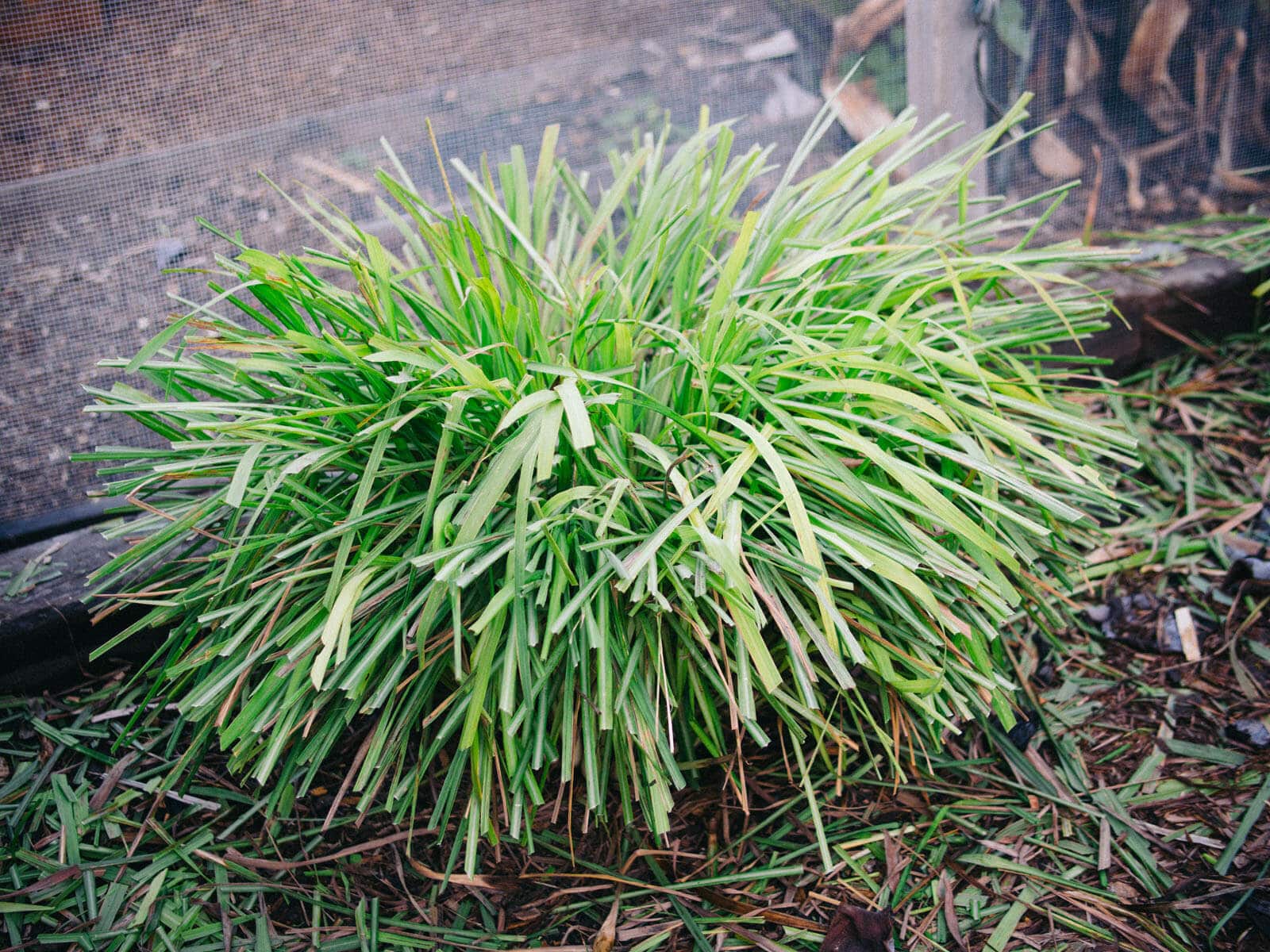
How to maintain lemongrass throughout the year
If you don’t use your lemongrass that often, try to keep the clump in check by removing wilted outer stalks once a month.
Maintaining your plant (simply by harvesting it) helps reduce the spread of pests and diseases. (Lemongrass is susceptible to rust, a fungal infection that favors warm temperatures and high moisture.)
Or, you can dig up healthy stalks with the roots intact and replant them elsewhere in your garden to thin out the clump. If you’re doing some major dividing, you can even pot up a few stalks in soil to give as gifts!
Try this recipe: A fresh lemongrass-ginger ale
This post updated from an article that originally appeared on May 1, 2013.















